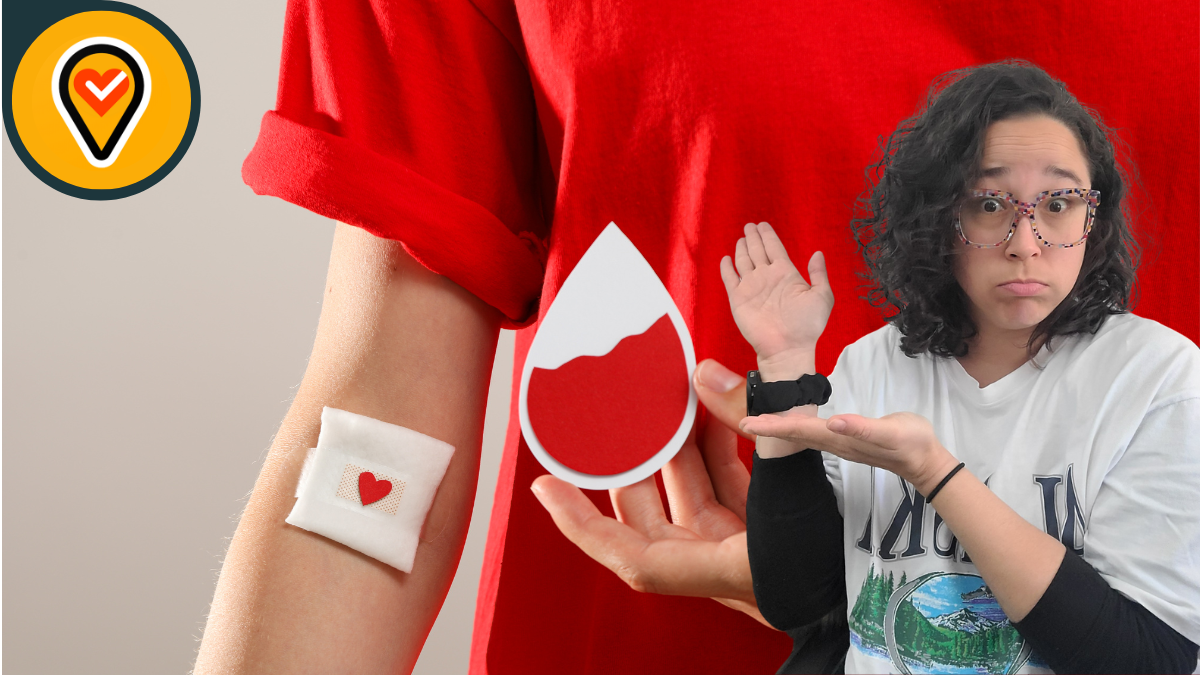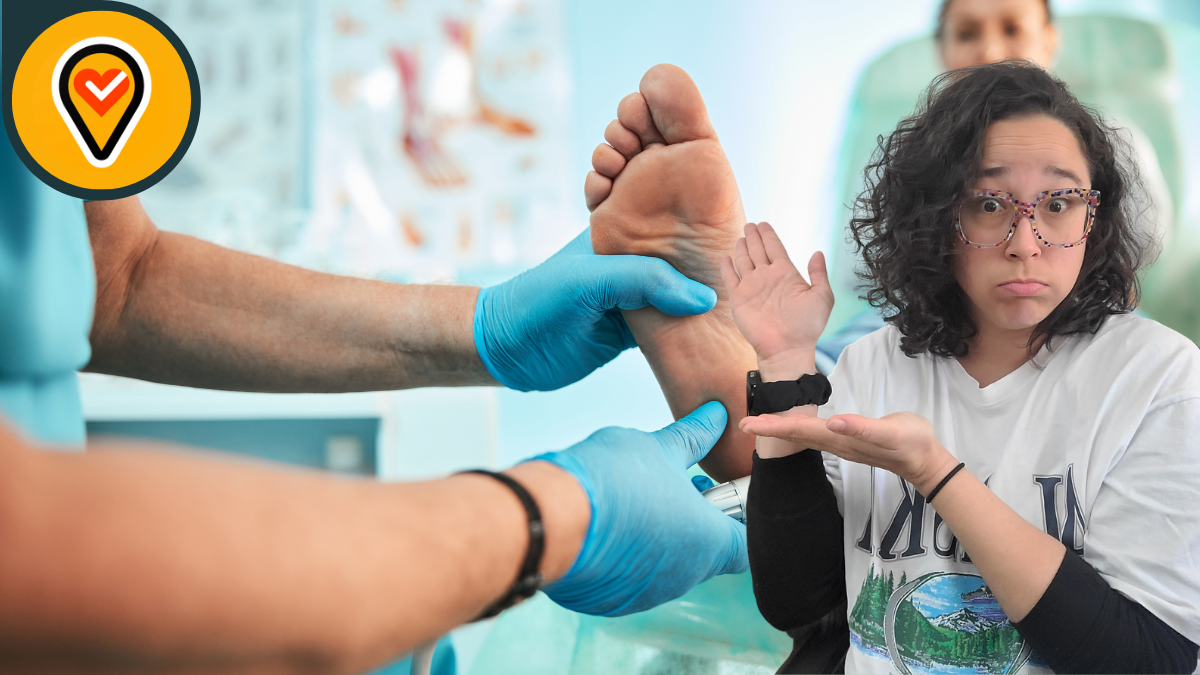
Blood Types That May Face Issues in Finding Donations in Korea
Unfortunately, we learned about blood types that may face difficulties in finding donations in Korea the tragic way. Therefore, researching this information so that international residents interested in moving to Korea understand 1) the potential risks for certain blood types and 2) the importance of donating blood. Let’s talk about this very serious life-and-death issue.
Table of contents
- Globally, Blood Types Vary
- Blood Types That May Face Difficulties in Finding Donations in Korea
- Why These Blood Types Struggle in South Korea
- Nationalities with Higher Proportions of Rh-Negative Blood Types
- Implications for International Residents Living in South Korea
- Planning is Critical
- The Korean Medical System Working to Improve Blood Donations
- National Blood Donation Campaigns
- Special Blood Donation Programs for Rh-Negative Donors
- Development of the Blood Information Management System (BIMS)
- Promoting Rare Blood Type Awareness
- Collaboration with International Blood Networks
- Blood Storage Technology Improvements
- Targeted Recruitment of Donors from Specific Communities
- Encouraging Repeat Donations and Tracking Donor Data
- Conclusion
Globally, Blood Types Vary
The issue of blood type availability is not unique to Korea. Blood type availability in the medical field varies significantly by country due to differences in blood type distribution, donation systems, and healthcare infrastructure.
In countries like the United States and most of Europe, blood types O+ and A+ are the most common, making them generally more available for medical use. However, countries such as South Korea and Japan have a higher prevalence of blood types like B+ and AB+, which are relatively rare in Western nations.
In fact, the availability of Rh-negative blood types, such as O- and A-, is a challenge in many Asian countries. In such Asian countries, Rh-negative blood is very rare, comprising less than 1% of the population in places like Korea and Japan.
To address these shortages, countries implement various strategies such as targeted blood donation campaigns, blood management systems, and international cooperation for rare blood types. The disparities in blood type distribution require tailored approaches to ensure an adequate supply, especially during emergencies and for patients with rare blood types.
Let’s talk about how such issue manifest in South Korea so that you know how they may impact you or your loved ones.
Blood Types That May Face Difficulties in Finding Donations in Korea
In South Korea, much like other Asian countries, negative blood types remain difficult to access. Such negative blood types include:
O- (Negative)
- Prevalence: Around 1% in South Korea.
- Challenges: Since O- is the universal donor blood type, it is always in high demand but is very rare in the Korean population. O-individuals may face challenges securing blood in emergencies, as they can only receive O- blood.
A- (Negative)
- Prevalence: Less than 1% in South Korea.
- Challenges: A- individuals are relatively rare, and they can only receive A- or O- blood. The limited number of donors makes it more difficult to find compatible blood in emergencies or planned medical procedures.
B- (Negative)
- Prevalence: Less than 1% in South Korea.
- Challenges: Similarly, B- individuals are rare and can only receive B- or O- blood. The small donor pool can create a shortage in emergency situations.
AB- (Negative)
- Prevalence: Less than 0.5% in South Korea.
- Challenges: AB- is the rarest blood type in South Korea, which makes it extremely difficult to find donations. AB- individuals can only receive blood from AB-, A-, B-, or O- donors, limiting their options even further.
Why These Blood Types Struggle in South Korea
Low Prevalence of Rh-Negative Blood Types
In South Korea, Rh-negative blood types (O-, A-, B-, AB-) are very rare, with an estimated 0.3% of the population being Rh-negative. This makes it more difficult for Rh-negative individuals to find compatible donors.
Smaller Donor Pool
With a smaller population of Rh-negative individuals, the blood donation system is less likely to have a robust supply of these rare blood types readily available.
Nationalities with Higher Proportions of Rh-Negative Blood Types
The distribution of Rh-negative blood types varies significantly across different ethnic and national groups. Generally, Rh-negative blood types are more prevalent among people of European descent and less common in other populations. Below is an overview of nationalities and ethnic groups with higher proportions of Rh-negative blood types:
| Region/Country | Estimated Percentage of Rh-Negative Individuals | Insights |
|---|---|---|
| Basque Country (Spain & France) | 15-30% | The Basque population has one of the highest frequencies of Rh-negative blood types globally. This high prevalence is attributed to their unique genetic heritage. |
| Northern Europe | 15-20% | Countries include the United Kingdom, Ireland, Germany, Netherlands, and the Scandinavian countries (Sweden, Norway, Denmark, Finland). Northern Europeans exhibit higher Rh-negative rates compared to other European regions. |
| Western Europe | 10-15% | Countries such as France, Germany, and the Netherlands fall into this category. The prevalence is slightly lower than in Northern Europe but still significant. |
| Central Europe | 10-15% | Includes countries like Austria, Switzerland, Czech Republic, and Poland. Rh-negative blood types are relatively common in these populations. |
| Southern Europe | 5-10% | Countries include Italy, Spain, Greece, and Portugal. The prevalence of Rh-negative blood types decreases as you move towards Southern Europe. |
| Middle East & North Africa | 5-7% | Rh-negative blood types are present but less common, influenced by genetic diversity and historical migrations in these regions. |
| Latin America | 5-10% | Due to a mixture of European, Indigenous, and African ancestries, Latin American populations have a variable prevalence of Rh-negative blood types. |
| South Asia | 1-3% | Countries include India, Pakistan, Bangladesh, and Sri Lanka. Rh-negative blood types are rare in these populations. |
| East Asia | <1% | Countries such as China, Japan, South Korea, and Taiwan have extremely low frequencies of Rh-negative blood types. |
| Africa | 1-2% | Rh-negative blood types are very rare in African populations. |
| Native Americans & Indigenous Peoples | <1% | Rh-negative blood types are extremely rare among Native American and other indigenous groups. |
Implications for International Residents Living in South Korea
For international residents living in South Korea, the distribution of blood types, particularly Rh-negative blood, has important implications for both healthcare access and emergency preparedness. Since Rh-negative blood is extremely rare in South Korea—comprising less than 1% of the population—international residents, especially those from regions with higher Rh-negative prevalence, need to be aware of the potential challenges in finding compatible blood. Below are the key implications:
Difficulty in Finding Rh-Negative Blood
- Limited Supply of Rh-Negative Blood: Since the majority of the South Korean population is Rh-positive, individuals with Rh-negative blood (especially from European, American, or Latin American countries where Rh-negative prevalence is higher) may face difficulties finding compatible blood in emergencies or during medical treatments requiring transfusions.
- Emergency Preparedness: International residents with Rh-negative blood types should take extra precautions. This includes:
- Carrying a blood type card or medical information at all times.
- Informing healthcare providers of their Rh-negative status in advance, particularly before surgeries or procedures that might require transfusions.
- Registering with local blood banks to help ensure access to Rh-negative blood in case of need.
Importance of Donating Blood
- Critical Need for Rh-Negative Donations: International residents with Rh-negative blood are highly encouraged to donate blood regularly while living in South Korea. This not only helps ensure that there is a supply of Rh-negative blood for themselves but also aids other Rh-negative residents who may require transfusions.
- Targeted Donation Drives: In regions with large expatriate populations, such as Seoul or Busan, blood donation drives are occasionally organized to encourage foreigners, especially those with Rh-negative blood, to contribute to the blood supply.
International Cooperation and Importation of Blood
- Potential for International Blood Imports: South Korea may need to import Rh-negative blood from countries where it is more common, especially during shortages or emergencies. However, this process can take time, making it critical for Rh-negative individuals to plan ahead for medical procedures that may require blood transfusions.
- Global Blood Networks: Some hospitals in Korea may collaborate with international blood banks or have access to specialized networks for sourcing rare blood types, though this is typically reserved for extreme cases.
Healthcare Awareness and Communication
- Educating Healthcare Providers: While South Korean hospitals are highly modernized, not all healthcare providers may immediately recognize the urgency of sourcing Rh-negative blood, especially for foreign residents. It’s important for international residents to advocate for themselves and communicate their blood type clearly to healthcare professionals.
- Language Barriers: Given the potential language barrier, it is important for foreign residents to ensure that their Rh-negative status is communicated effectively, particularly in emergency situations where time is critical.
Additional Measures for Pregnant Women
- Rhesus Incompatibility in Pregnancy: Women with Rh-negative blood who are pregnant with an Rh-positive baby need a special treatment called RhoGAM to prevent Rh incompatibility. Rh incompatibility can lead to serious complications during pregnancy. International residents who are pregnant or planning to become pregnant should discuss their Rh status with their obstetrician early in their pregnancy to ensure timely care and availability of the necessary medication.
Planning is Critical
For international residents living in South Korea, especially those from countries with a higher prevalence of Rh-negative blood types, being proactive is essential. Challenges in accessing Rh-negative blood in South Korea can be mitigated by regular blood donation, clear communication with healthcare providers, and emergency preparedness. By staying informed and taking the right steps, foreign residents can ensure they receive the best possible care, even in urgent situations where rare blood types are needed.
- Register with Local Blood Banks: Foreign residents with Rh-negative blood types should register with hospitals or blood banks to ensure their blood type is known and can be matched quickly in an emergency.
- Consider Blood Donations: Individuals with these rare blood types are encouraged to donate blood regularly to help increase the available supply in the system.
- Carry Blood Type Information: Always carry a card or documentation that indicates your blood type, especially if you have a rare blood type, to expedite emergency medical care.
By understanding the challenges and taking proactive steps, individuals with these rare blood types can mitigate the risks of blood shortages in South Korea.
The Korean Medical System Working to Improve Blood Donations
The Korean medical system is actively working to improve access to blood donations for uncommon blood types. As of 2024, the medical system particularly wants to improve Rh-negative blood types and started a variety of strategies and initiatives. Here’s a look at the measures being taken based on recent research and initiatives in South Korea:
National Blood Donation Campaigns
The Korean Red Cross, which oversees blood donation in South Korea, conducts regular nationwide blood drives to encourage more donations. These campaigns specifically highlight the need for donations from individuals with rare blood types, including Rh-negative blood. These campaigns:
- Focus on educating the public about the importance of donating rare blood types.
- Provide incentives for donors, such as gift cards or health check-ups, to increase participation.
- Organize targeted donation events at universities, companies, and military bases, reaching diverse demographics.
You can even find a permanent Red Cross Donation Site near AK Plaza in Pyeongtaek. If you don’t speak Korean, you need a certified translator to go with you to donate blood.
Special Blood Donation Programs for Rh-Negative Donors
To address the scarcity of Rh-negative blood, Korea has implemented special programs to encourage Rh-negative individuals to donate regularly:
- Rh-Negative Donor Registry: The Korean Red Cross manages a registry of Rh-negative donors. These donors are periodically contacted and encouraged to donate, especially during times of shortages.
- Mobile Blood Units for Rh-Negative Donors: In some regions, mobile blood donation units specifically seek out Rh-negative individuals and make donation opportunities more convenient.
Development of the Blood Information Management System (BIMS)
The Blood Information Management System (BIMS) is an advanced digital system used by the Korean Red Cross and hospitals to track blood supply and demand across the country:
- This system allows hospitals to quickly locate rare blood types across different blood banks and coordinate transfers as needed.
- The real-time monitoring of blood supply levels helps forecast shortages, enabling proactive donor outreach, especially for uncommon blood types like O-, A-, and AB-.
Implementation Timeline
While specific public records detailing the exact implementation date of BIMS are limited, the system has been gradually developed and enhanced over the past decade. Key milestones in its development include:
- Early 2010s: Initiation of digital blood management systems to replace manual record-keeping, aiming to improve accuracy and efficiency in blood tracking.
- Mid to Late 2010s: Integration of advanced data analytics and real-time monitoring capabilities to better forecast blood supply and demand across various regions.
- Early 2020s: Expansion of the system to include more comprehensive donor registries, enhanced compatibility matching algorithms, and improved interoperability with hospitals and blood banks nationwide.
These phases reflect ongoing efforts by the Korean Red Cross and other medical institutions to modernize blood management practices, leveraging technology to address challenges related to blood type shortages and emergency response.
Key Features of BIMS
- Real-Time Blood Supply Tracking: Monitors the availability of different blood types across various blood banks and hospitals in real-time.
- Donor Registry Management: Maintains an up-to-date registry of blood donors, including those with rare blood types, facilitating quick matching during emergencies.
- Predictive Analytics: Utilizes data analytics to predict future blood demand and identify potential shortages before they occur.
- Interoperability: Ensures seamless communication and data sharing between hospitals, blood banks, and the Korean Red Cross, enhancing coordination during blood transfusions and emergencies.
- Enhanced Donor Engagement: Implements features to remind donors of eligibility for donations, schedule appointments, and provide feedback on donation impact.
Promoting Rare Blood Type Awareness
The Korean medical system is working to raise awareness about rare blood types through:
- Public Awareness Campaigns: These campaigns educate the population about the significance of Rh-negative blood and encourage those who may not know their blood type to get tested.
- Social Media and Media Outreach: Information about the urgent need for rare blood type donations is shared through mass media and social media platforms, reaching younger demographics.
Collaboration with International Blood Networks
South Korea has also explored collaborations with international blood banks and medical organizations to ensure a steady supply of rare blood types. This includes the Korean Red Cross regularly visiting US Military Bases for blood drives:
- This includes partnerships with countries where Rh-negative blood is more common, allowing for international blood imports in extreme situations.
- These networks are critical during emergencies when the local supply is insufficient to meet the demand.
If you have a rare blood type for Korea, PLEASE find a way to donate.
Blood Storage Technology Improvements
The Korean healthcare system has invested in improving blood storage technologies to ensure the long-term viability of rare blood supplies:
- Cryopreservation of rare blood types allows for longer storage periods, ensuring that blood can be kept available for extended times without degradation.
- Advances in blood matching technology help optimize the use of rare blood types by improving the efficiency and precision of blood transfusion compatibility testing.
Targeted Recruitment of Donors from Specific Communities
In South Korea, certain foreign communities, particularly expatriates from Western countries, may have a higher proportion of Rh-negative blood types. To address this:
- Expatriate Outreach Programs have been implemented to encourage foreign residents in Korea, especially those from countries where Rh-negative blood is more common, to donate.
- These outreach efforts are often supported by multilingual campaigns and partnerships with foreign embassies and international organizations.
Encouraging Repeat Donations and Tracking Donor Data
The Korean Red Cross promotes repeat blood donations by developing relationships with donors who have rare blood types. This includes:
- Providing donors with information on the frequency of safe donation and sending reminder messages when they are eligible to donate again.
- Tracking rare blood donors in a national database, ensuring they can be contacted in emergencies when their blood type is needed.
Conclusion
South Korea’s medical system is working comprehensively to improve access to blood donations for uncommon blood types, particularly Rh-negative types, by implementing public awareness campaigns, improving technology and systems for managing blood supplies, and collaborating with international networks. By focusing on education, convenience, and targeted outreach, the Korean healthcare system continues to enhance its ability to meet the demand for rare blood types in both routine and emergency medical situations.

Founded in 2015, the South of Seoul team consists of volunteers on three continents working together to support English-speaking people traveling or living in South Korea. South of Seoul volunteers work with organizations and individuals across South Korea to improve equitable access to information across South Korea. Much of South of Seoul’s information focuses on Pyeongtaek, Gyeonggi-do, South Korea.
Blogs published under the authorship of “South of Seoul” include blogs compiled by multiple volunteers to improve access to standardized information unrelated to individualized personal experiences.





